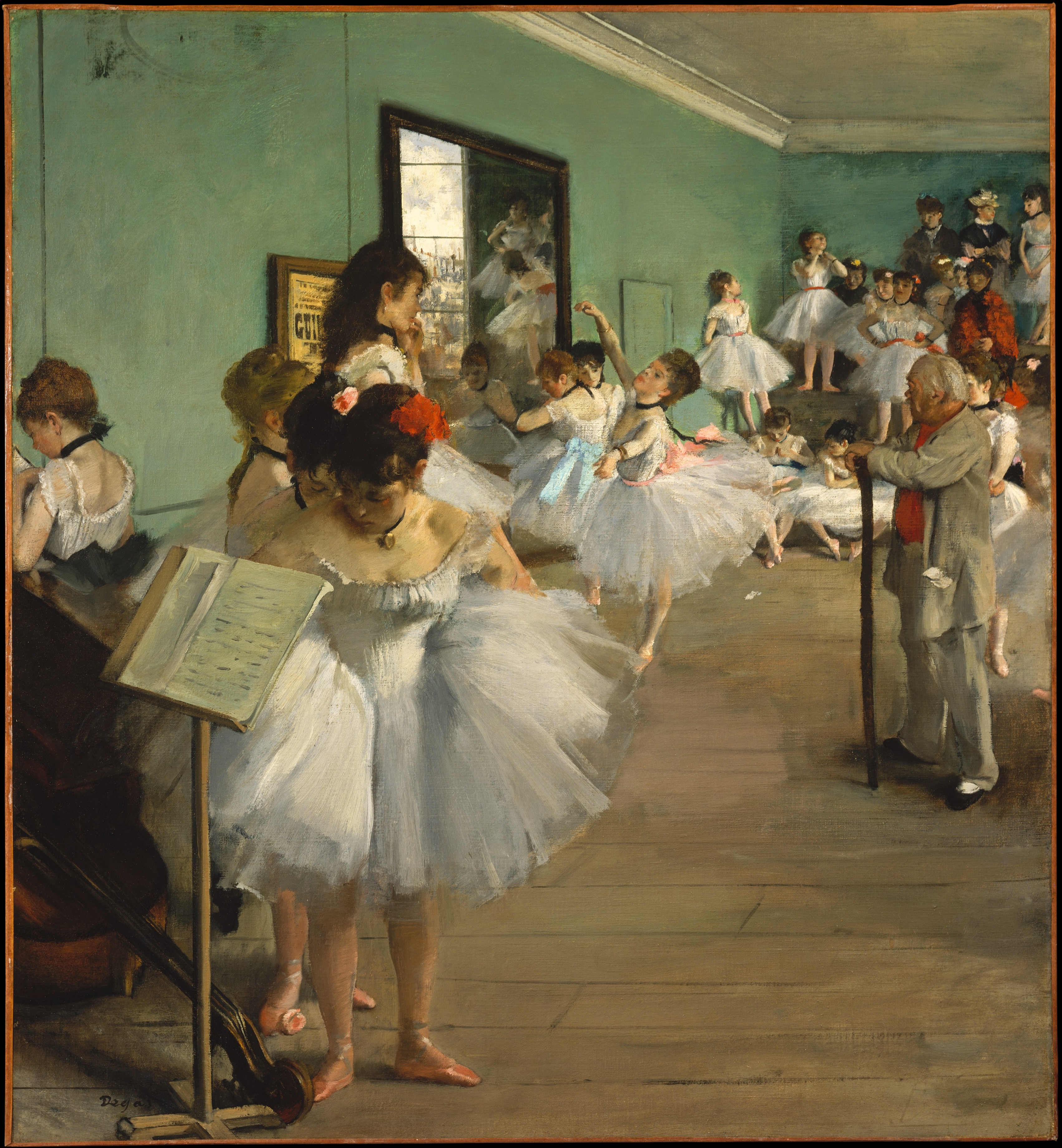 |
| The Dance Class by Degas; source: Wikimedia Commons |
Then, after I became interested in Chinese painting when I was there the first time, I took painting lessons. My teacher was excellent and even though he didn’t know English and my Chinese at the time was rudimentary, he was able to convey his instructions in such a way that I had no problem understanding what I was supposed to do during each lesson. I first learned to paint a bamboo tree—the trunk and some leaves on a few branches—and although the image looked easy when my teacher did it, I found that it most definitely was not when it was my turn.
In traditional Chinese culture, the way one learns is through repetition. So I had to copy his model paintings over and over, carefully attempting to replicate the images in front of me. I rarely succeeded but I really enjoyed the effort and I got better over time. I developed and understanding of the elements that comprised a Chinese painting and I better appreciated the artwork on the scrolls I saw when I visited stores and museums. When I left China at the end of my contract, I brought back several books about Chinese painting as well as brushes, paints, and ink so I could continue to study Chinese painting.
Likewise, teaching looks easy from afar: Just watch other people do it and then it’s your turn. But when you delve into it, the deeper you dive the harder it gets. What could be so difficult about telling students what they need to know??? Well, the longer I taught, the less I knew. Whether it was about how young children and adolescents learn or about how to teach the English language or about how to co-teach effectively or about how to manage a classroom of kids or about how to develop productive working relationships with colleagues or how to teach students with learning disabilities or how to teach academic content or how to keep up with paperwork or…
Teaching is like painting. There is always something else to learn! And the more you learn, the more you realize how difficult it really is to teach well.




